Nothing too exciting this week, so I’m making up for it by providing several different things – quantity instead of quality, the bywords of the US.
Let’s start with one that I discovered while mowing, and thus had to resort to the smutphone to capture, which once again convinced me how much they suck.
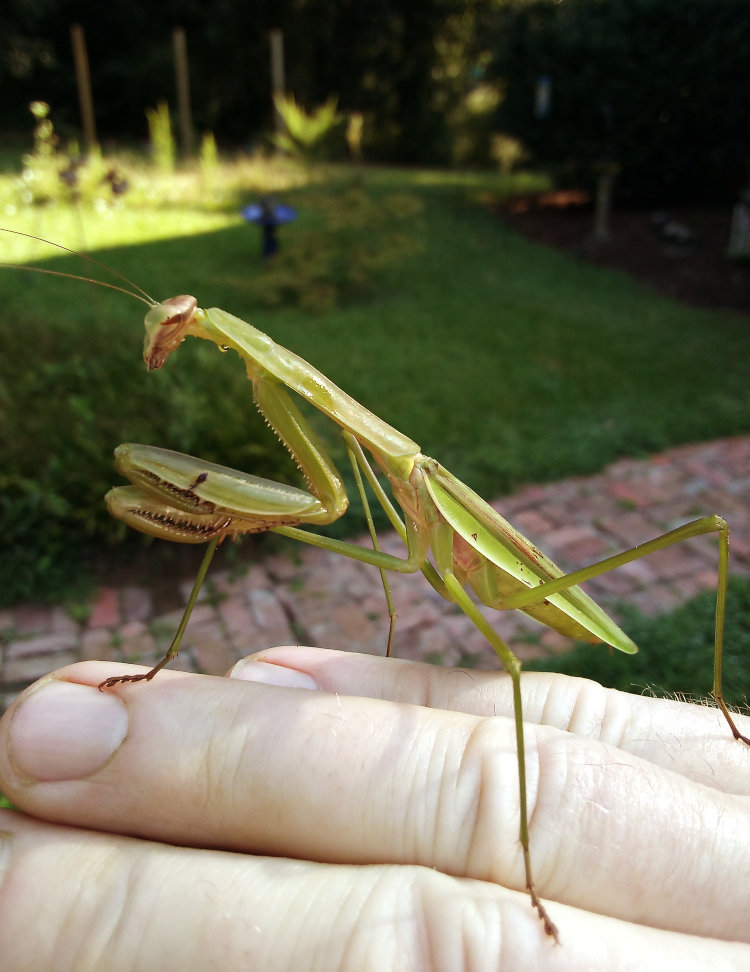
The mantids have not been highly visible on the property, and so finding this one was a little surprising, since it’s an adult Chinese mantis (Tenodera sinensis,) though with the wings it could have arrived from anywhere. Still, the largest mantid found so far wasn’t even half this size, though likely the other common species around here instead, the Carolina mantis.

Despite the smutphone camera repeatedly locking focus directly on the mantis, which was dead-center in the focusing ring, damn near every time the shutter was tripped the fucking thing adjusted focus to the background. I would have charitably put this down to attempting this one-handed, had I not handed the phone over the The Girlfriend, who had the spare hand to tap the screen to tell the goddamn phone, “Focus here,” and still had it jump to the background immediately before tripping the shutter. Out of eight or nine frames, only these two locked in properly – and then, the color register and quality was still sub-par. Now, I’m sure that some people with their hyper-expensive smutphones can achieve better, and hooray for them. I’m not spending that much for a phone that goes obsolete within 18 months, especially something that fragile; I’ve spent a small fraction of the high-end phone costs on my current cameras, which do it right and will trash any phone photo handily. This is called, “cost effectiveness.”
In the background of this sits the almond tree, by the way, which has been very happy with the move and recently surpassed me in height – I just don’t have enough comparison photos to show this off well.
A few different, new-to-me wildflowers have appeared on the property, or to be more accurate, they’ve bloomed and made me aware of their presence. Presented in order of their difficulty to identify.
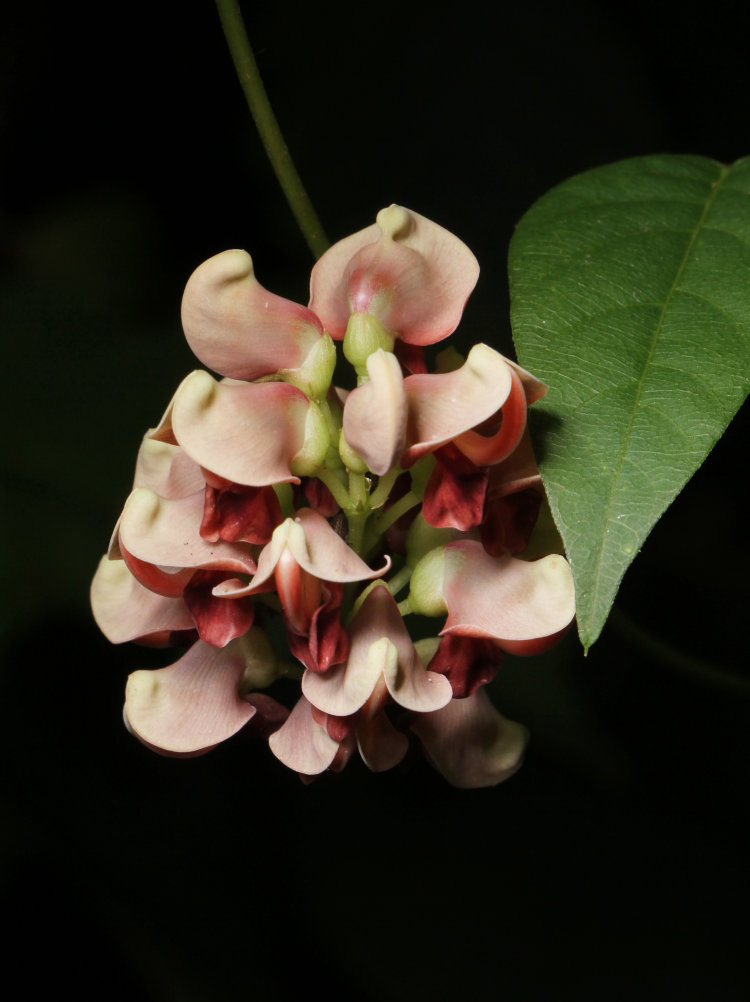
i found this one in fairly short order within the North Carolina Wildflower Database that I use: this is a groundnut (Apios americana,) which also goes by the common names of potato bean, Indian potato, Virginia potato, wild bean, and wild sweet potato, all of which are misleading since it is a member of the pea family. Plants appear to be even worse than insects about having regional, colloquial names, to say nothing of the people that would confidently misidentify them. You get a hint of the esoteric bloom structure here, which I will have to revisit in better detail.
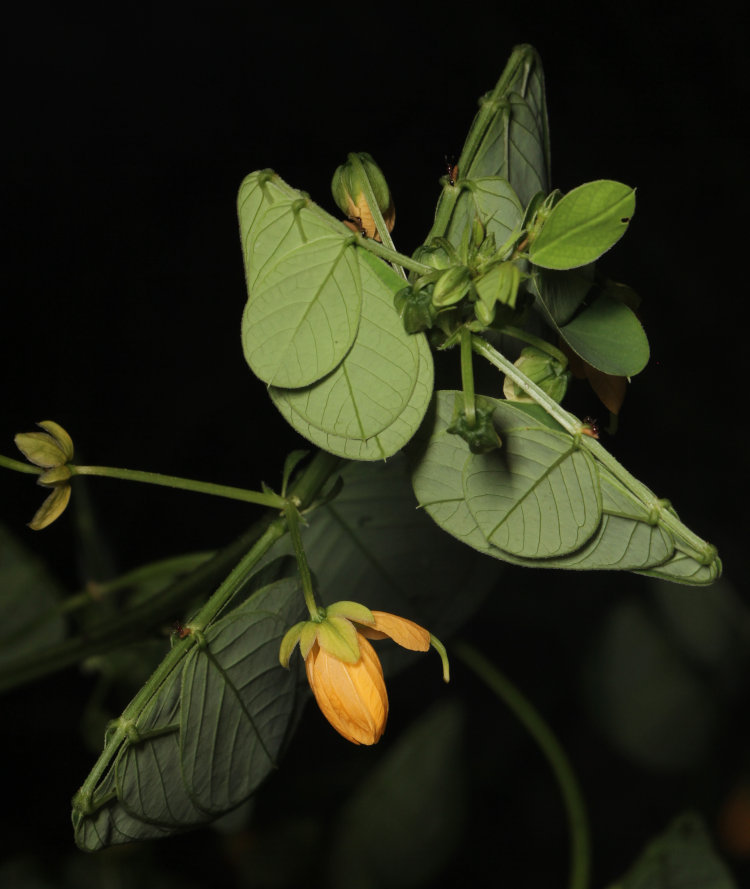
I made a small mistake on this one, in that I didn’t tackle these images until after nightfall, not realizing that this was one of those plants that close up at night. This is a sicklepod (Senna obtusifolia,) also going by five other common names, and I was also examining this plant to see if it featured any sleeping anoles, which is now a semi-regular exercise. So I actually examined those leaves closely to see if there were any tail-tips sticking out, thinking that an anole might have achieved its position before the leaves fully closed (which I don’t imagine do so firmly enough to actually trap a lizard.) We’ll return to this topic in a moment.
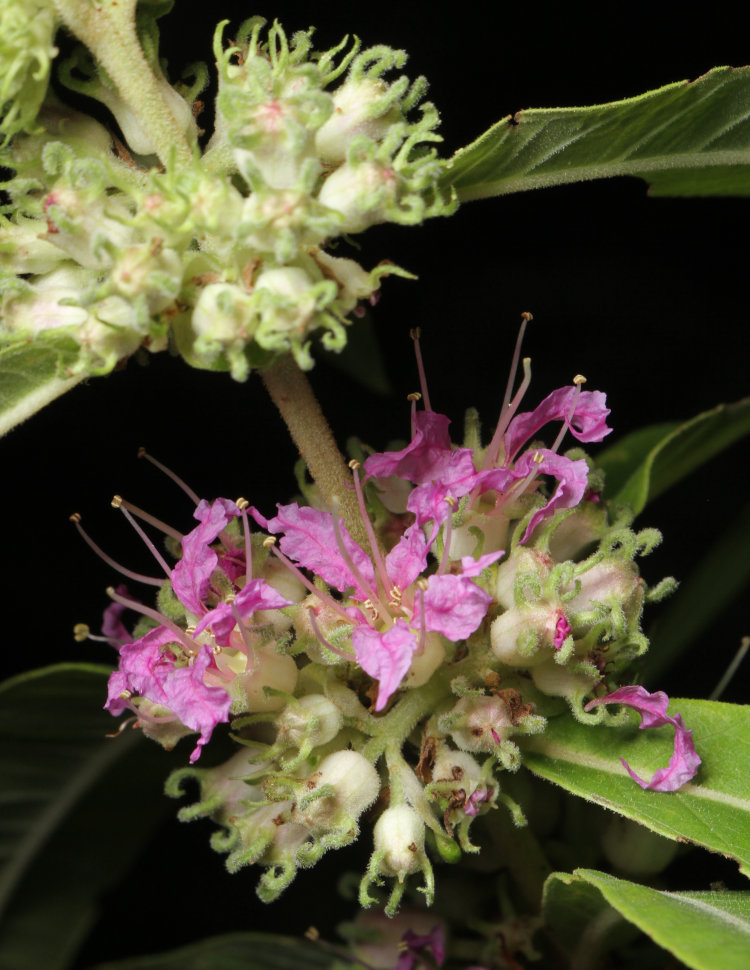
I found nothing even approaching this in the online database, even accounting for their execrable take on what color something is, so I had to go back out with the smutphone and resort to PlantNet, which quickly identified it as a swamp loosestrife (Decodon verticillatus,) though for some reason the name was hyphenated in the app; it’s also called a waterwillow, which is decidedly more pleasant. The moths were partaking of these blossoms while I was out there at night.
Speaking of willows…
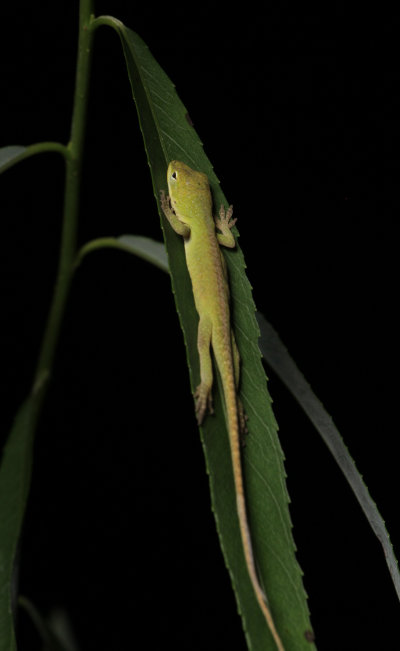 As linked earlier, I’ve begun going out at night to do a count of the newborn Carolina anoles (Anolis carolinensis) that I find sleeping on various plants, since it now seems to be a serious buttload of them. For a couple of nights, my count stood at 23, but last night it jumped to 28. I’m sure there are more, but that’s how many I could confidently spot. Moreover, this was the first found on my new weeping willow (Salix babylonica) tree, last year’s birthday present, more or less; I was promised the tree when we found one in good shape, which was achieved several weeks ago, and it has also been quite happy with the new location. I made the mistake of not measuring it when we first got it, but it’s over three meters tall now.
As linked earlier, I’ve begun going out at night to do a count of the newborn Carolina anoles (Anolis carolinensis) that I find sleeping on various plants, since it now seems to be a serious buttload of them. For a couple of nights, my count stood at 23, but last night it jumped to 28. I’m sure there are more, but that’s how many I could confidently spot. Moreover, this was the first found on my new weeping willow (Salix babylonica) tree, last year’s birthday present, more or less; I was promised the tree when we found one in good shape, which was achieved several weeks ago, and it has also been quite happy with the new location. I made the mistake of not measuring it when we first got it, but it’s over three meters tall now.
[When I was growing up in central New York, we planted a weeping willow in a damp portion of the yard soon after moving in, so 1973 or ’74. As they do, this grew quickly and soon dominated that portion of the yard, and by the mid-eighties it was large enough to climb; I had a hammock strung across two boughs about five meters up, where I would lie and read on summer days, and in the fall, as the wind got gusty but not yet cold, it was enormously satisfying to be riding in the swaying canopy of the tree. The last time that I drove past the old house, it was still there, but as of March of this year, it is now missing in Google Earth images, which saddens me, but half a century still isn’t bad for a willow. Since we already had bald cypress on the property here, one of my pipe dreams, I figured we needed a new willow, though how much climbing I might be doing remains to be seen…]
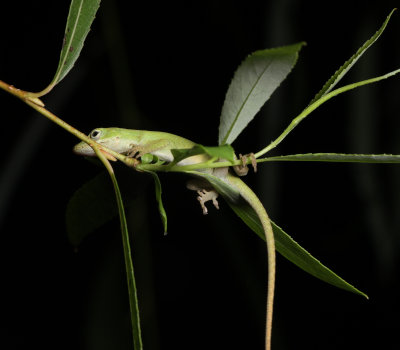 Actually, there were two anoles on the tree – despite that dangling foot giving the appearance of having caught this one trying to scramble away, it had only opened its eyes for the photo as I leaned in close with the headlamp. They do occasionally adopt some of the more awkward poses to sleep in, including hanging fully vertical, head down.
Actually, there were two anoles on the tree – despite that dangling foot giving the appearance of having caught this one trying to scramble away, it had only opened its eyes for the photo as I leaned in close with the headlamp. They do occasionally adopt some of the more awkward poses to sleep in, including hanging fully vertical, head down.
As I was making these rounds, I caught movement within the thick foliage that marks the hollow in the yard that we call The Puddle; in winter, it’s a complete, if small, pond, but the spring sees it become overgrown with only a few centimeters of water in the wet seasons. This means that the frogs adore it, and it isn’t hard to find treefrogs and narrowmouth toads hanging out. A tiny green treefrog (Dryophytes cinereus) appeared to be struggling, unable to free itself from the stem of a leaf, and I reached in to detach the leaf and see if I could help. My mistake: it was not actually trapped, but had seized a small ‘inchworm’ larva that refused to relinquish its hold on the leaf, and so a tug-of-war was going on, even within my hand as I snapped photos.
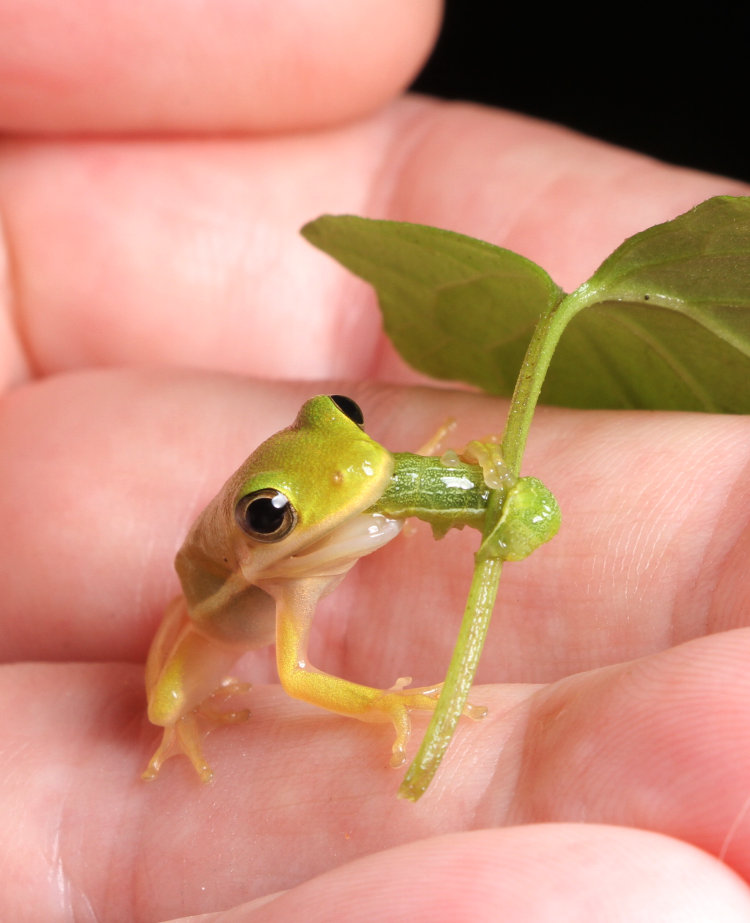
Notice the little fingers gripping the stem and larva – I really should have had video.
Eventually, between not having success with the larva and not being wild about doing this in my hand with the camera flash going off, the frog disgorged the larva and hopped away. I felt bad that it was deprived of its meal, but I’d been trying to help it, honest.
Okay, fine, I’ll go out and distribute a load of mealworms in the vicinity. Happy now?

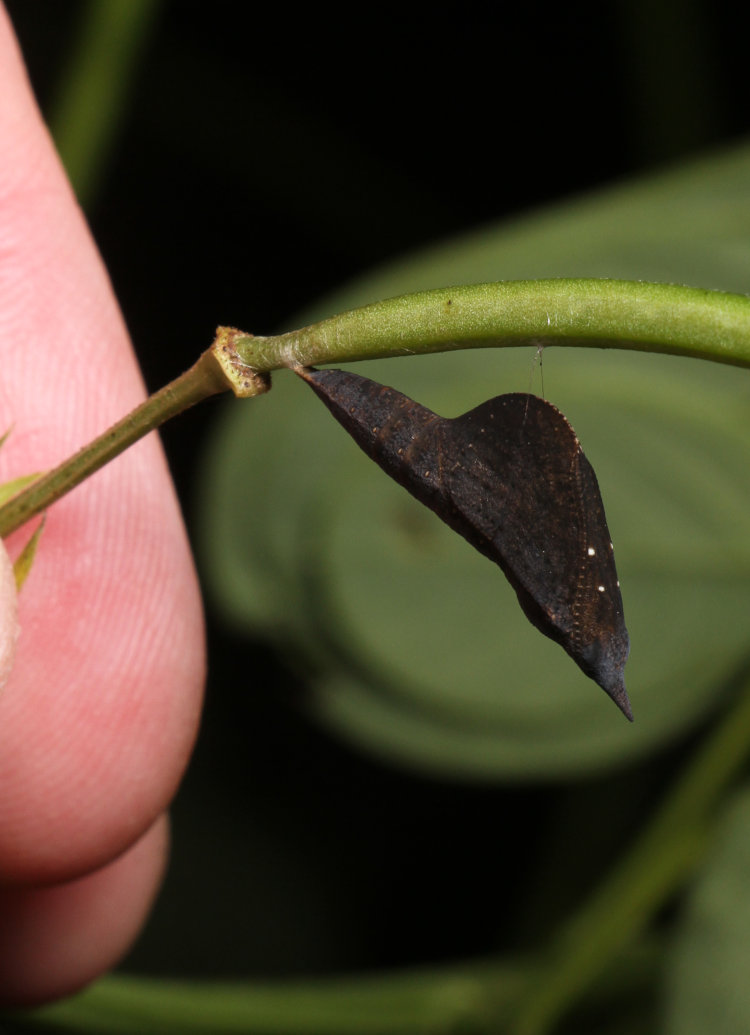
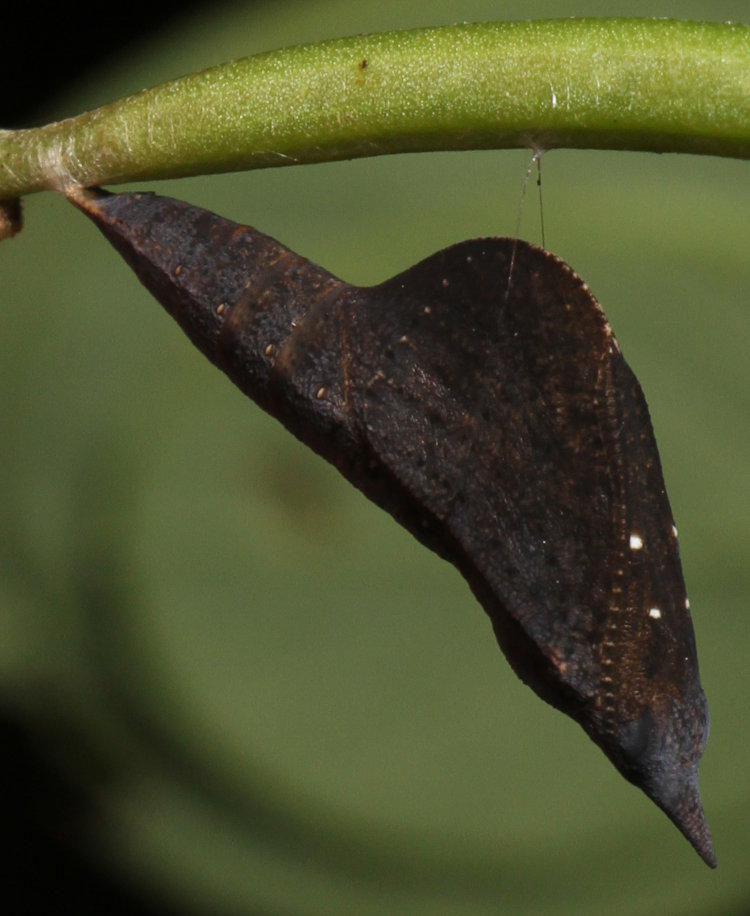





















































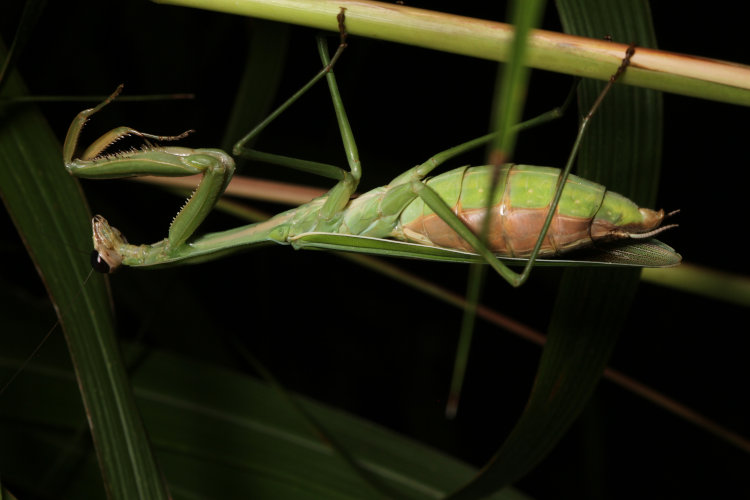
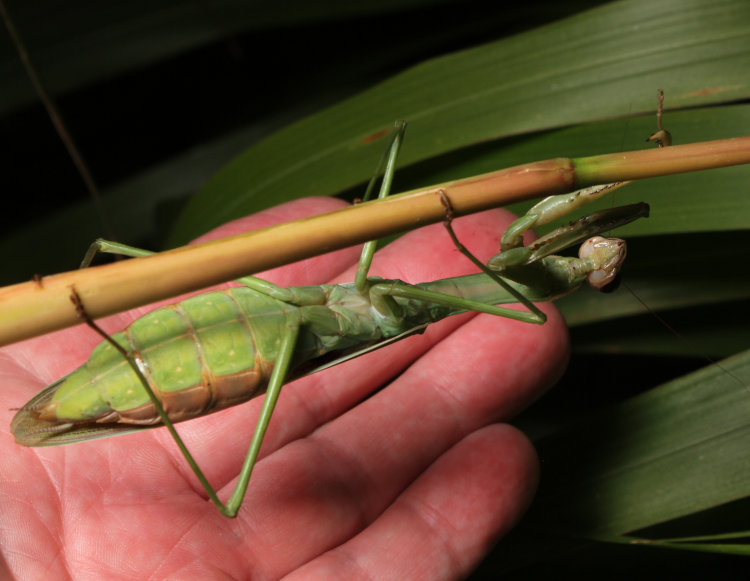
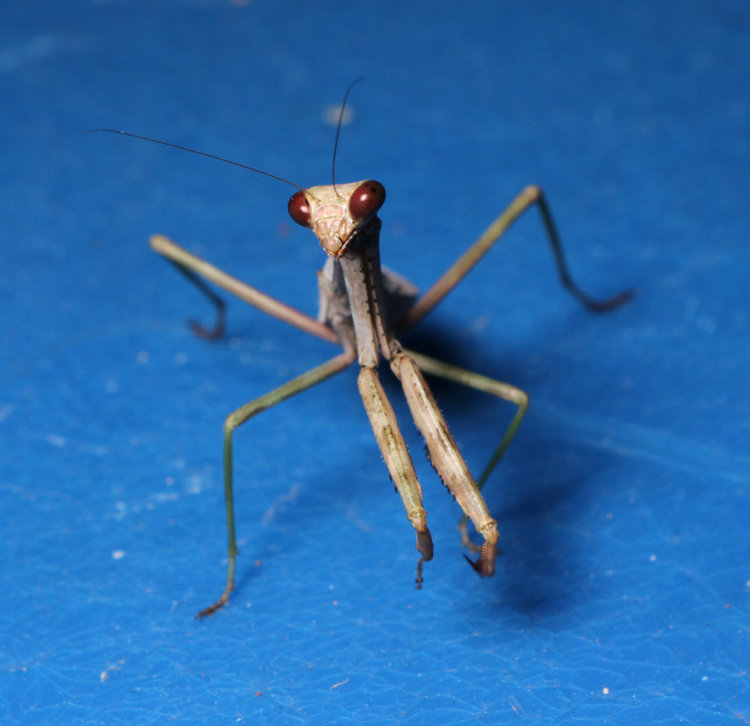
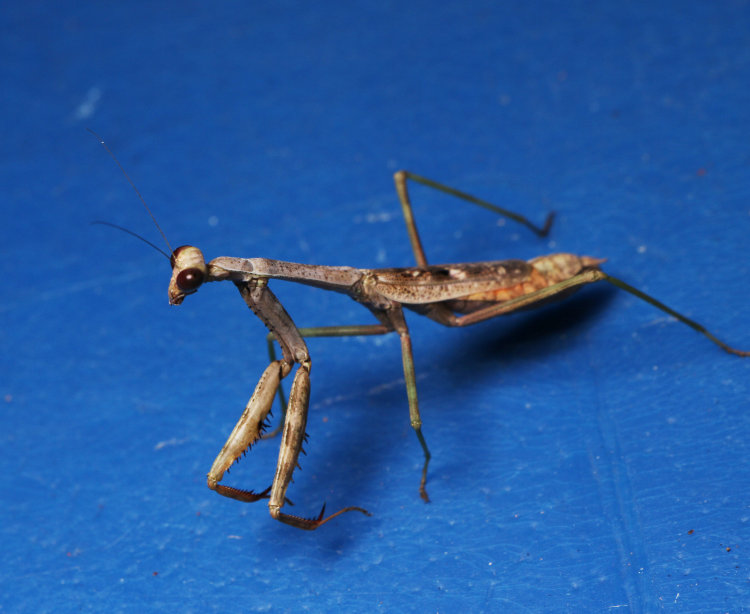
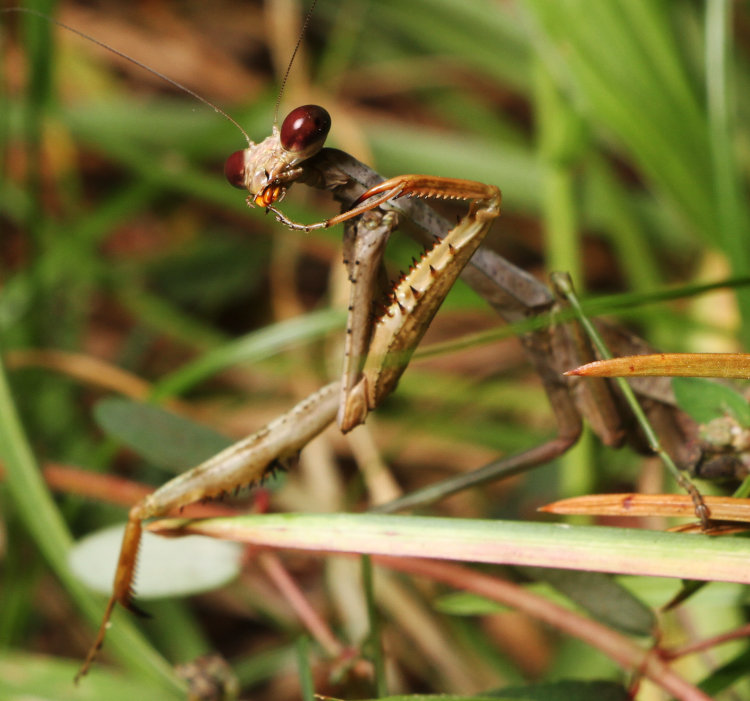
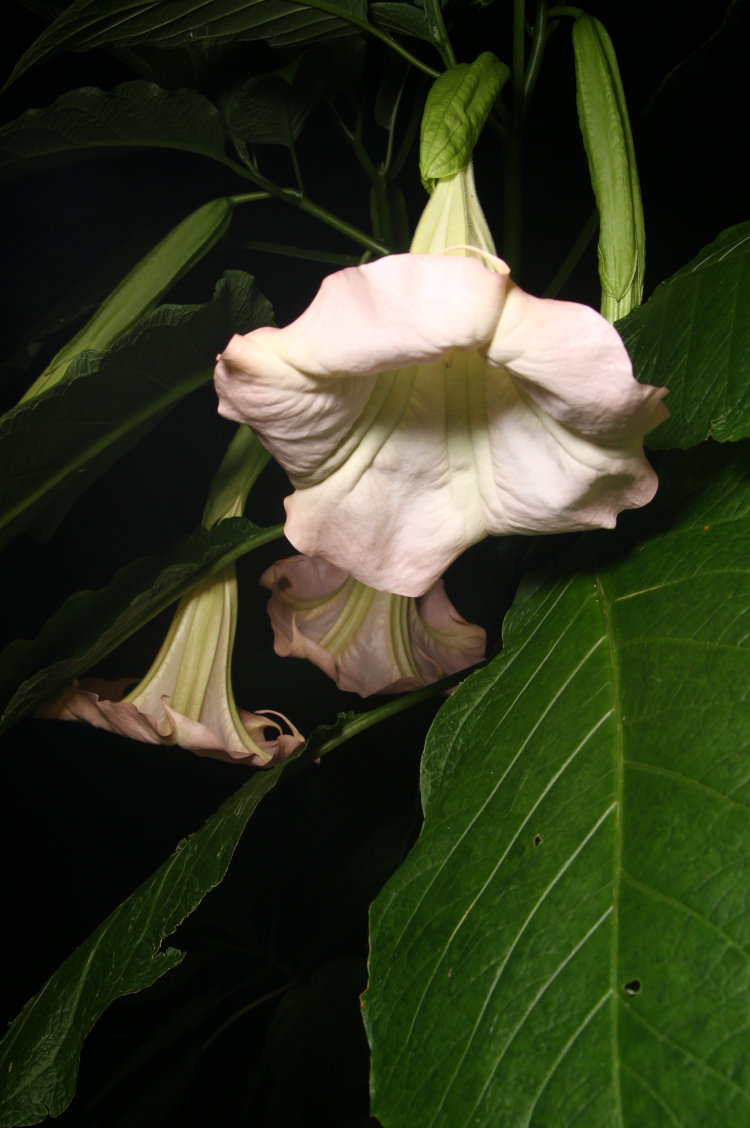
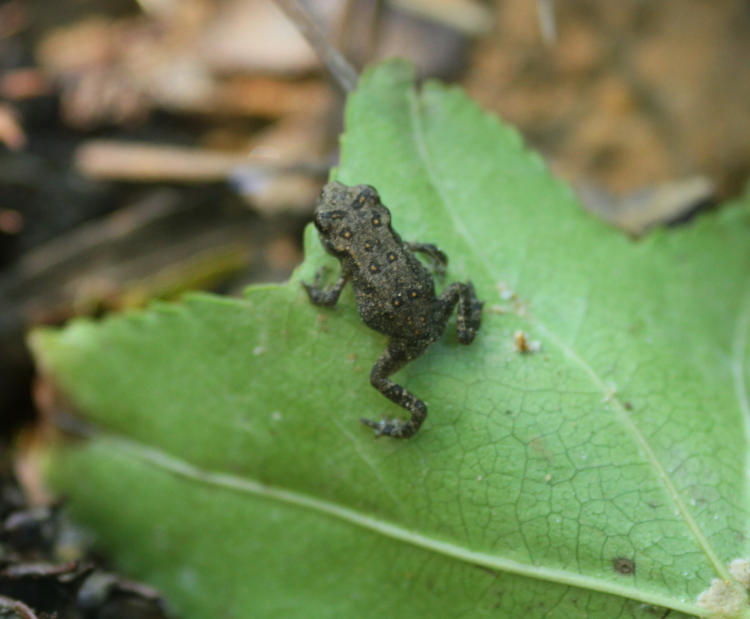
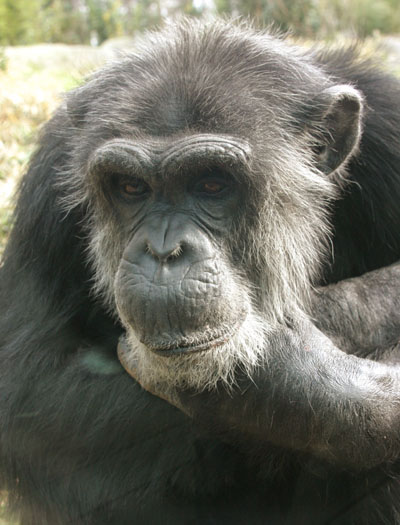 I don’t recall what the original purpose of this image was supposed to be, though the contemplative nature of it is obvious. It dates back from 2006, which predates the blog itself, and while it obviously got into this folder later than that, the program that I used for editing wrote the original ‘Date Taken’ as the ‘Date Modified,’ so I can offer nothing further. Those that maintain that I’m looking more and more like this as time goes by are ignoring that fact that the chimp has more hair on top (that’s considerably less grey) and does not have eyebrows sprouting wild and unruly hairs that resemble kudzu in more ways than one. The ears are a dead match though.
I don’t recall what the original purpose of this image was supposed to be, though the contemplative nature of it is obvious. It dates back from 2006, which predates the blog itself, and while it obviously got into this folder later than that, the program that I used for editing wrote the original ‘Date Taken’ as the ‘Date Modified,’ so I can offer nothing further. Those that maintain that I’m looking more and more like this as time goes by are ignoring that fact that the chimp has more hair on top (that’s considerably less grey) and does not have eyebrows sprouting wild and unruly hairs that resemble kudzu in more ways than one. The ears are a dead match though.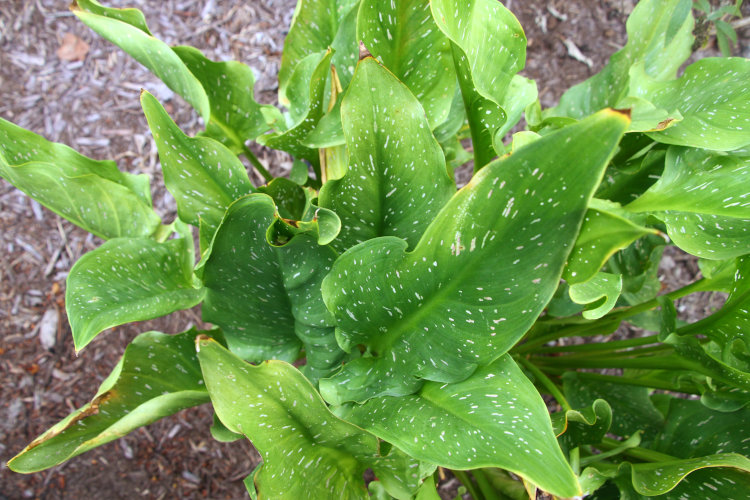
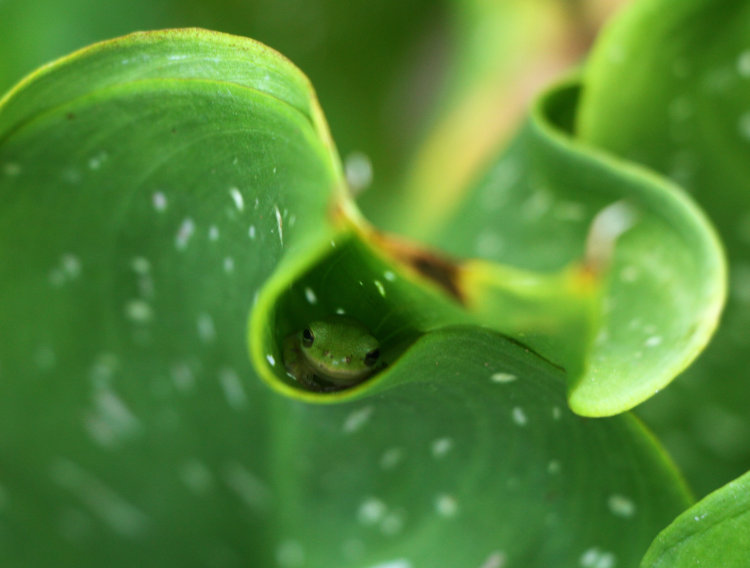
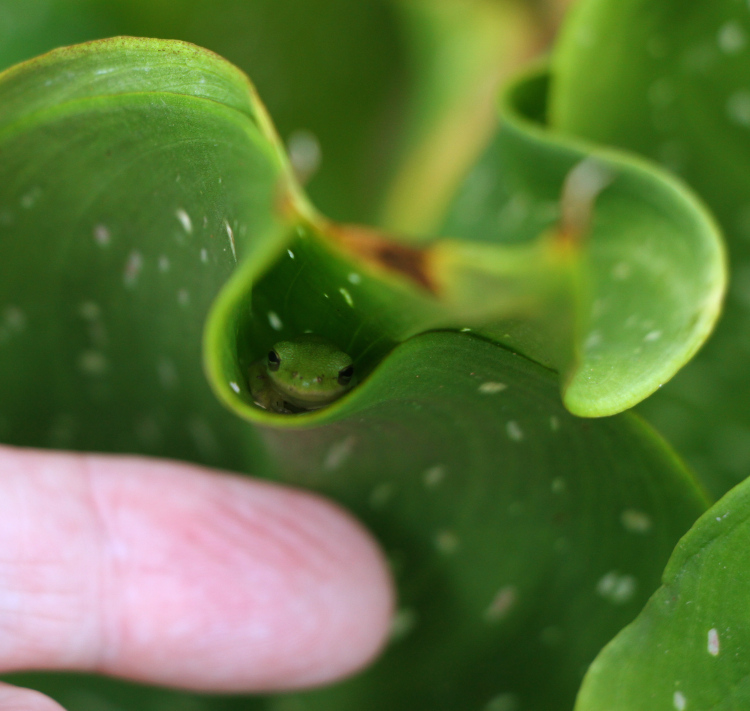
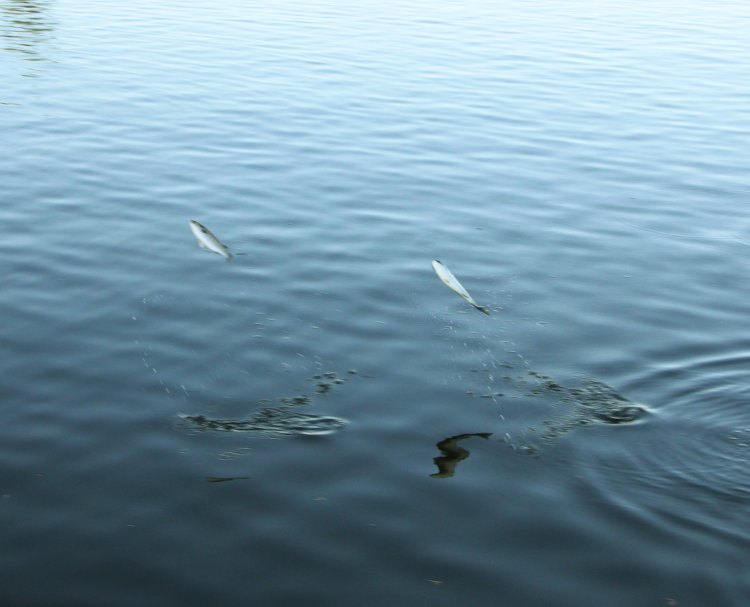
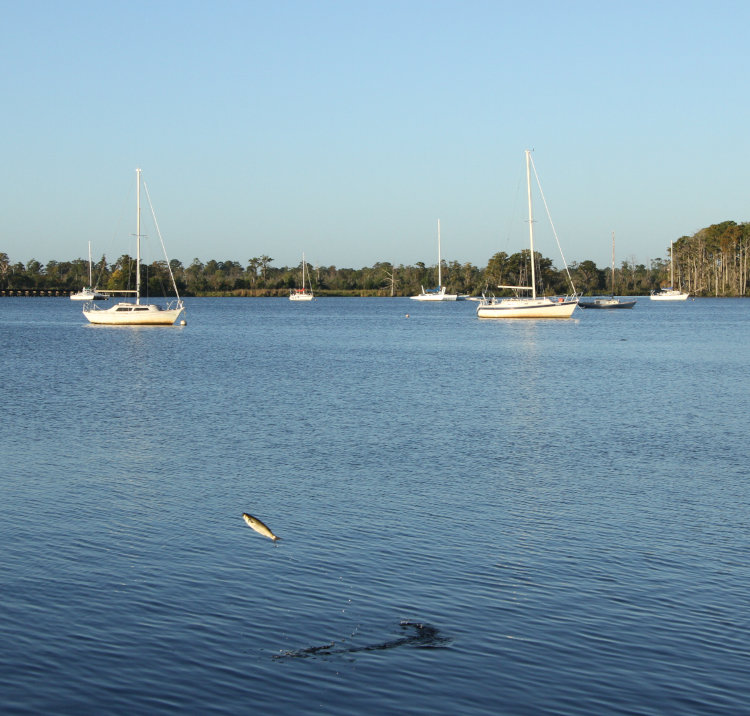
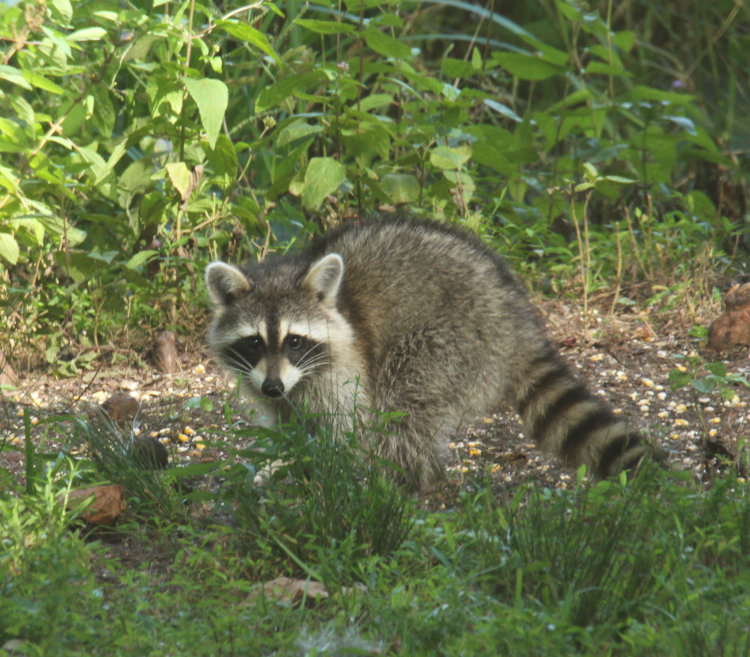
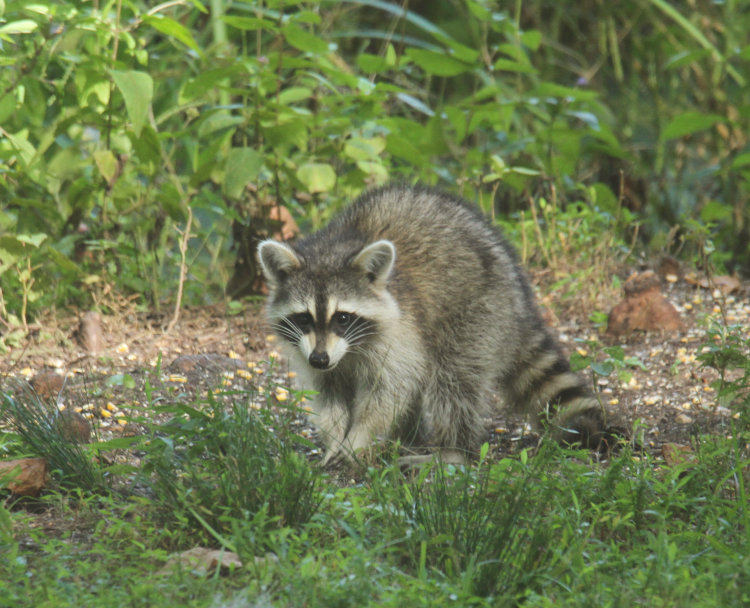

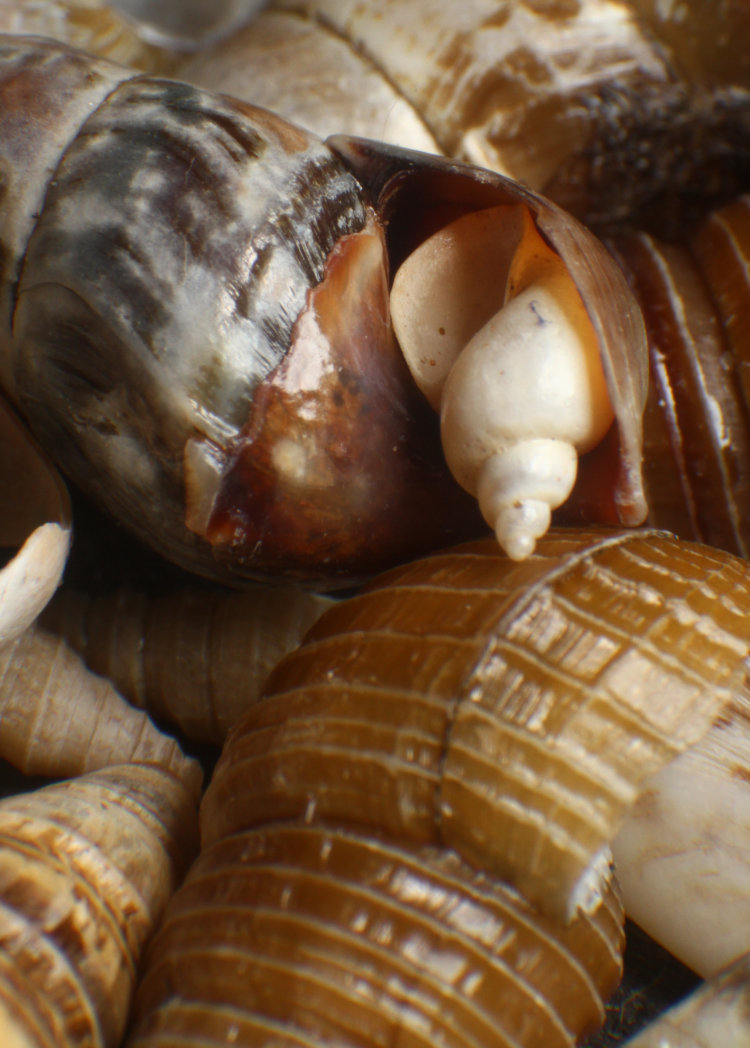
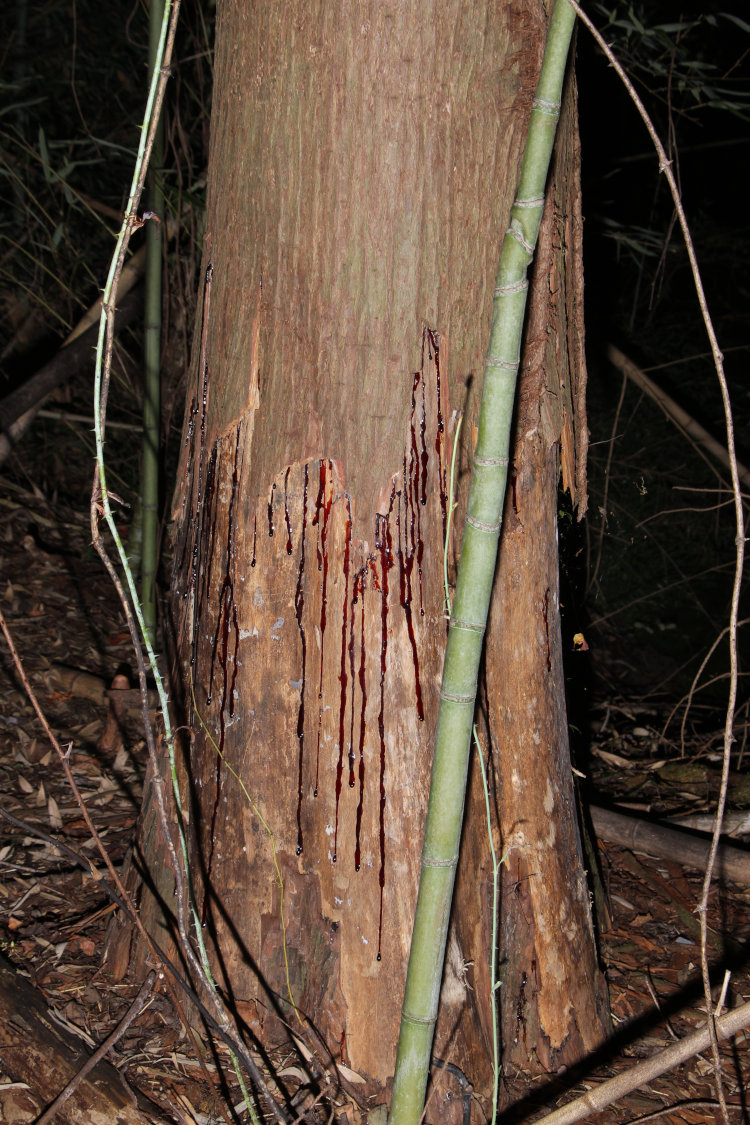
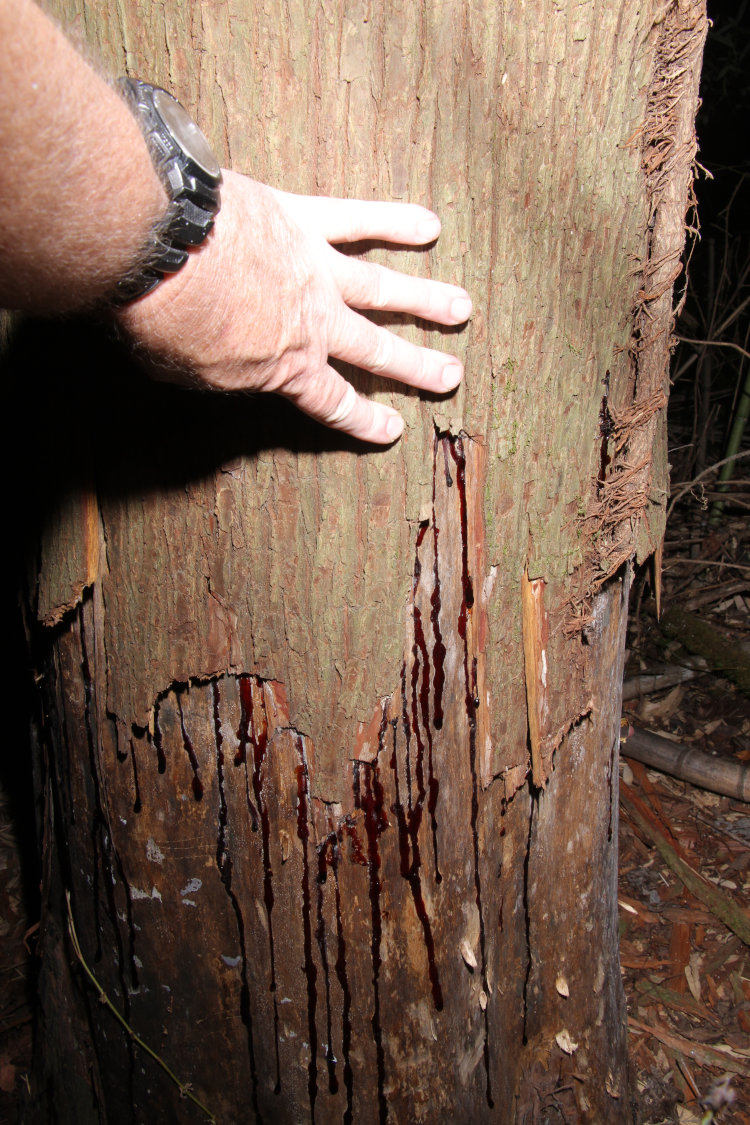
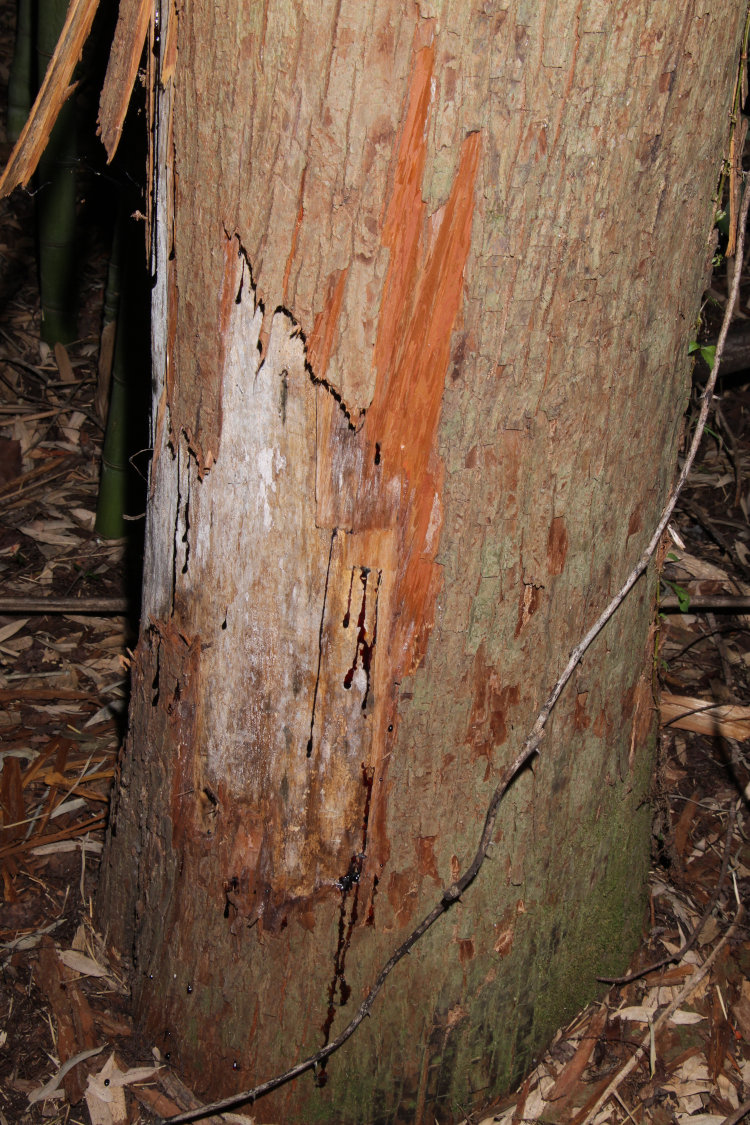


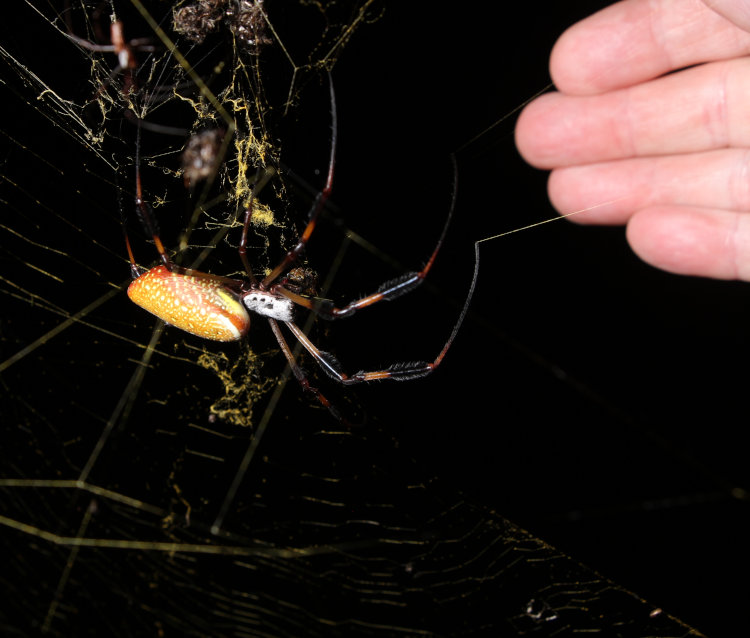
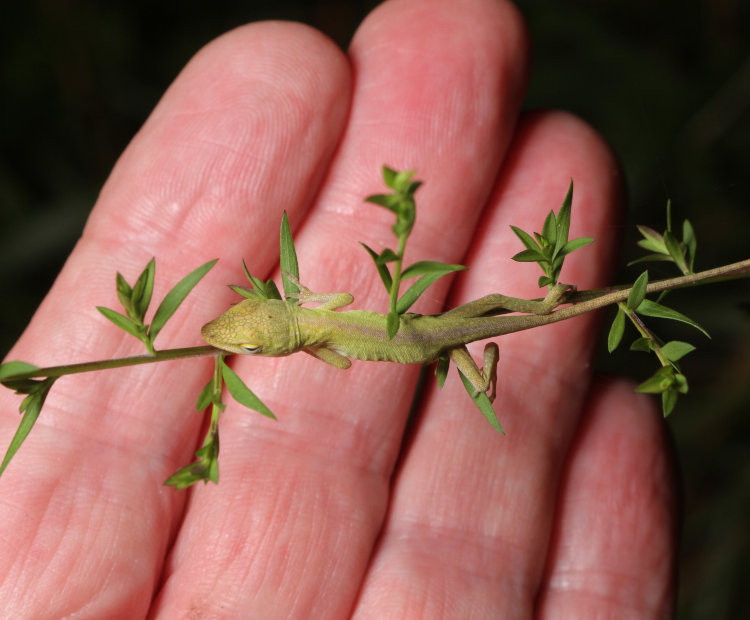









 As linked earlier, I’ve begun going out at night to do a count of the newborn Carolina anoles (Anolis carolinensis) that I find sleeping on various plants, since it now seems to be a serious buttload of them. For a couple of nights, my count stood at 23, but last night it jumped to 28. I’m sure there are more, but that’s how many I could confidently spot. Moreover, this was the first found on my new weeping willow (Salix babylonica) tree, last year’s birthday present, more or less; I was promised the tree when we found one in good shape, which was achieved several weeks ago, and it has also been quite happy with the new location. I made the mistake of not measuring it when we first got it, but it’s over three meters tall now.
As linked earlier, I’ve begun going out at night to do a count of the newborn Carolina anoles (Anolis carolinensis) that I find sleeping on various plants, since it now seems to be a serious buttload of them. For a couple of nights, my count stood at 23, but last night it jumped to 28. I’m sure there are more, but that’s how many I could confidently spot. Moreover, this was the first found on my new weeping willow (Salix babylonica) tree, last year’s birthday present, more or less; I was promised the tree when we found one in good shape, which was achieved several weeks ago, and it has also been quite happy with the new location. I made the mistake of not measuring it when we first got it, but it’s over three meters tall now. Actually, there were two anoles on the tree – despite that dangling foot giving the appearance of having caught this one trying to scramble away, it had only opened its eyes for the photo as I leaned in close with the headlamp. They do occasionally adopt some of the more awkward poses to sleep in, including hanging fully vertical, head down.
Actually, there were two anoles on the tree – despite that dangling foot giving the appearance of having caught this one trying to scramble away, it had only opened its eyes for the photo as I leaned in close with the headlamp. They do occasionally adopt some of the more awkward poses to sleep in, including hanging fully vertical, head down.